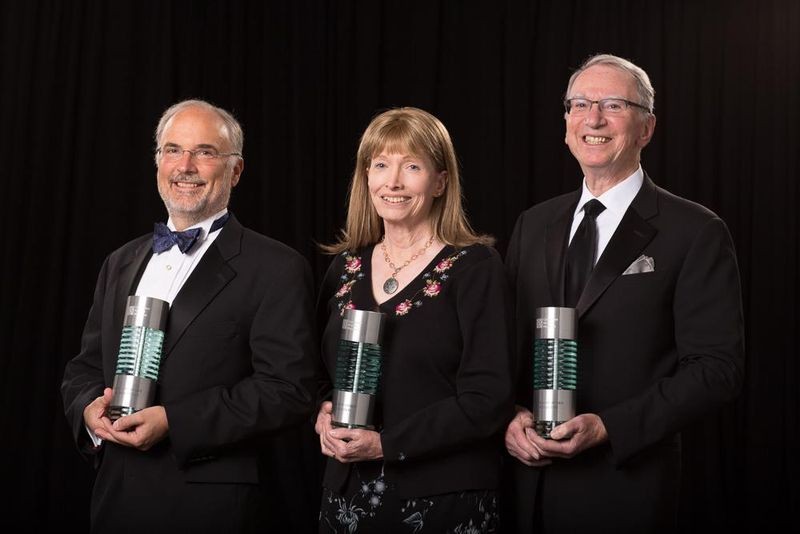
image

2014 CHM Fellows, (l-to-r) Crawford, Conway, Jacobs
On April 26, the Museum held its annual tribute to that special group of computing innovators it calls Fellows. Fellows are idealists, practical, driven, visionary; their list of inventions mind-boggling: the first practical electronic random-access computer memory, the creation of Unix, FORTRAN, Linux, Moore’s Law, artificial intelligence, desktop publishing, the World Wide Web, packet switching, the mouse, Ethernet, the microprocessor… technologies that have changed our world.
This year, three new Fellows joined the Museum’s Hall of Fellows: Lynn Conway, “for her work in developing and disseminating new methods of integrated circuit design”; Irwin Jacobs, for his pioneering work in digital mobile telephony, data and communications, and technology”; and John Crawford “for his seminal work on industry-standard microprocessor architectures.”
In this blog, we present two videos of each Fellow: a biographical piece and the acceptance speech. We hope you enjoy learning about this year’s Fellows in their own words.
Conway’s work with Caltech professor Carver Mead and her Xerox PARC colleagues ignited a new method of designing complex integrated circuits (ICs), techniques that brought a revolution in computer and consumer products. Her innovative ideas about semiconductor scaling and IC fabrication rules led to a synthesis that clarified what had formerly been a highly manual, almost craft-like, process of designing ICs. Conway formed her ideas into an invited course at MIT in the fall of 1978 to explore how easily her ideas would be accepted. The course was a success and a new book, co-authored with Mead, became a bestseller, spreading the new methods to many dozens of universities worldwide. These methods, and the associated fabrication program, trained an entire generation of designers, giving them new tools to build the ever-more complex ICs that power our world.
Lynn Conway: A Life
Lynn Conway: CHM Fellows acceptance speech
John Crawford has spent his career at Intel developing microprocessors. These complex circuits, based on the Intel x86 architecture, form the basis for the IBM-compatible personal computer industry and today power over 85% of the world’s PCs and servers. Crawford’s goal was to extend the x86 design through multiple generations of micro-architecture and process capabilities, a quest that has taken him 35 years. Crawford joined Intel in 1977 as a software engineer developing software tools for Intel’s 8086 processor. In 1982, he became the chief architect for the Intel386, Intel486 microprocessors and later co-manager of the Pentium processor design. Crawford has kept Intel’s flagship x86 architecture viable over countless technology shifts, changes in design goals and market conditions, and innovations in computer science research.
John Crawford: A Life
John Crawford: CHM Fellows acceptance speech
Irwin Jacobs has had a remarkably diverse career: university professor, pioneer in digital communications, entrepreneur and CEO. From 1959 to 1972, Jacobs held professorships at MIT and the University of California, San Diego, during which time he co-authored a textbook in digital communications that is still in use today. In 1968, he co-founded LINKABIT Corporation, a maker of very small aperture earth terminals for satellite communications. Upon the acquisition of LINKABIT by a larger firm, Jacobs co-founded Qualcomm to develop digital telephony communications systems based on carrier division multiple access (CDMA) wireless technology. CDMA is the basis for all third-generation cellular networks, which now provide voice and broadband Internet access for over 1.6 billion customers.
Irwin Jacobs: A Life
Irwin Jacobs: CHM Fellows acceptance speech
CHM Fellows have created much of the technology that makes the modern world possible. We hope you enjoyed learning about this year’s remarkable Fellows in their own words. To see the full list of Fellows, please visit our Hall of Fellows.
Congratulations, Class of 2014!
Nominations for CHM’s 2015 Fellows open June 24, 2014. Apply here on or after that date.